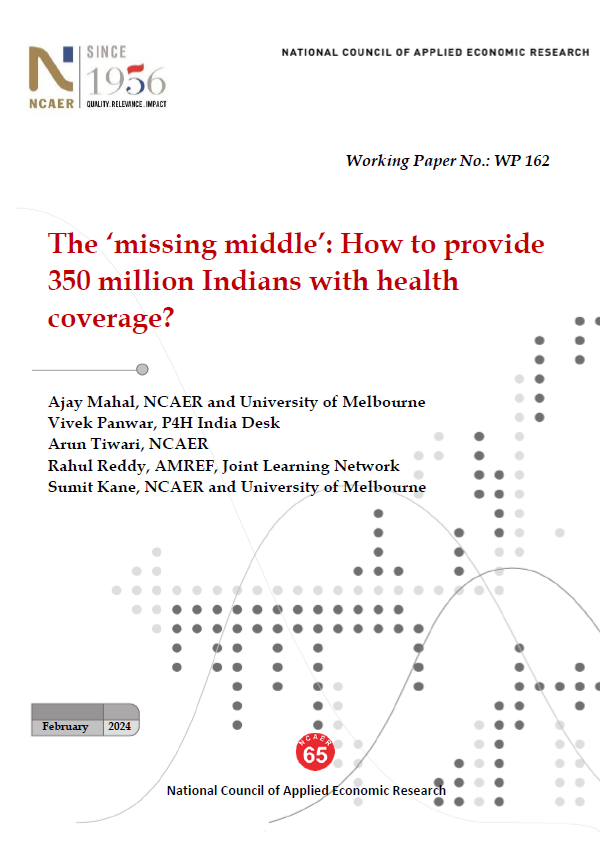The ‘missing middle’: How to provide 350 million Indians with health coverage?
Ajay Mahal
Arun Kumar Tiwari
Sumit Kane
February 2024
Despite recent expansion in its population covered by public-funded insurance, a large section of India’s population remains at major financial risk from health shocks. This segment of population, sometimes referred to as the “missing middle,” typically consists of population groups that are, or have been, engaged in informal sector work, and are not poor enough to benefit from state subsidized contributions to insurance premiums. We estimate that the missing middle number at least 300-350 million in India, with large variations in their economic circumstances. Using extensive international and India-based evidence, we assess two approaches to cover the missing middle: an expansion in public sector health delivery and a contributory demand-side financing system, that is currently popular in India. We conclude that a mix of the two approaches appears to be the most feasible in the short-run, given limited regulatory capacity and resource constraints, with a longer-run emphasis on integrated systems. Moreover, this approach is also likely to help address the problem of shallow coverage of existing health insurance coverage that concerns large numbers of people extending beyond the group comprising the missing middle.
Centre for Health Policy and Systems







